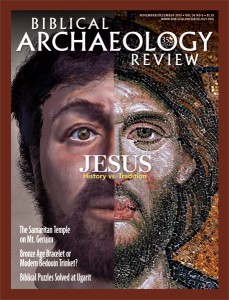Strata: Ancient Persians Massacre Jerusalem Christians

A new analysis of graves in Jerusalem documents a little-known massacre of Christians during the Persian siege and conquest of the Holy City in 614 A.D.
The Persian conquest was short-lived. Sixteen years later, in 630 A.D., the Christian Byzantine emperor Heraclius retook the city, even retrieving the True Cross from the Persian conquerors.
The massacre of Christians was described in detail by a monk named Antiochus Strategos from the monastery of Mar Saba, about 15 miles south of Jerusalem in the Judean Desert. He mentions 35 different sites where victims of the Persian atrocity were buried. According to Strategos, the Persians massacred more than 4,500 Christians.
In the early 1990s, redevelopment work outside the Old City’s Jaffa Gate accidentally broke into an extraordinary cave that was one of the sites mentioned by Strategos. When archaeologists excavated the cave, they retrieved thousands of bones from hundreds of human skeletons—part of a mass burial. Other details—including cross-shaped pendants and a mosaic inscription reading “For the redemption and salvation of those, God knows their names”—leave little doubt that these were some of the victims of the Christian massacre. The recovery of these remains and the cave in which they were placed has been dramatically described for BAR readers by excavator Ronny Reich.a
Already a library member? Log in here.
Institution user? Log in with your IP address.

